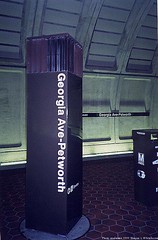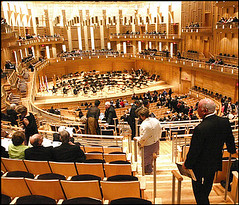More subway service to center DC hits snag
 Image from NYC Subway website.
Image from NYC Subway website.I wasn't going to write about this story from today's Post, "D.C. Plan for Yellow Line Stalls: Md., Va. Officials Question Extending Metrorail Service in NE," except for a quote in the article, by Robert Smith, that bugs me, but it gets to the general point about service, and balancing desires and cost, with the objective of moving the most people for the least cost.
The issue is whether or not there is demand to populate the service, or will you merely send a bunch of underused trains to more points (stations) through the system, somewhat unused. The WMATA board members who balked at the idea of extension did make a good point, that all such under-service questions should be considered, not just the one apparently extant in DC. While the article doesn't say so, after such a study, service could be expanded where it has the most impact, and/or where the jurisdictions are willing to pay for such expansions.
Transit's a great thing to have, but poorly utilized transit services do no one any favors, and end up not making a good case for transit to non-users who may either consider transit, or sound off about the "subsidy" of transit to their elected officials--engendering comments such as "Hey, every time I see a bus or subway, it's empty... why should my tax monies be going to support transit. No one's using it, and we don't have enough roads..."
Anyway, in terms of the idea that under-service or over-service questions need to be studied, Board member Robert Smith (an Ehrlich appointee from Maryland) is quoted. From the article:
In an interview, Smith said he wanted "turnbacks" on the Red Line to end. Some trains reverse direction at Montgomery County's Grosvenor-Strathmore and Silver Spring stations during peak hours to accommodate the majority of riders who get off at or before those stops. Commuters wanting to go farther north must wait for trains that go to the ends of the line.
The issue is how much demand is there from Grosvenor to Shady Grove during peak periods. If it's limited, does it make sense to pay hundreds of millions of dollars for more train cars to provide additional train-sets to provide fully through service for every train, or does it make sense to apply "constraints" (see "linear programming") and get high system utilization at the least cost in terms of both money and service reduction?
The answer is no different that Director Smith's reasonable reservations about going forward with service expansion to the Green Line stations at 7th Street, U Street, Columbia Heights, Petworth, terminating at Fort Totten. (Note to Washington Post headline writer, the first four stations listed are in the northwest quadrant of the city.)
The current constraints should continue to be applied UNLESS there are massive ridership demands for stops at the stations beyond Grosvenor. Given the polycentricity, deconcentration, decentralization arguments discussed yesterday, and the fact, lamentably that many work destinations in Montgomery County are not accessible by light rail (I-270 corridor), it's likely that WMATA is maximizing service utility by doing things the way they are.
E.g., in some of the discussion about proposed cessation of service on a MARC railroad commuter line in Northern Montgomery County (since rescinded) people talked about the massive expansion of housing in that area as a justification for continued service because of possibly (big) increases in ridership in the future. But Clarksburg only has 1,800 dwelling units. At two people/dwelling unit, that just isn't very much demand for transit.
Without studies of where these people are likely to work, and marketing and transportation demand management programs to increase usage, such increases are not likely to occur.
Especially if I am correct in my belief that the farther people live away from the core--Clarksburg is about 36 miles from the White House--the less connection they have to the city, including workplace choices and visits to attractions. (E.g., why go to the Kennedy Center when you can go to Strathmore Hall mid-county, which is still a clip, 21 miles from Clarksburg or at least the house I chose from which to clock the trip)
 Strathmore has proved a fitting complement to Meyerhoff Hall for the Baltimore Symphony. Photo: Rich Lipski, Washington Post.
Strathmore has proved a fitting complement to Meyerhoff Hall for the Baltimore Symphony. Photo: Rich Lipski, Washington Post.Similarly, the number of housing units being added to Columbia Heights (one of the justifications for increased service) is not so significant that it would be more than a small very marginal increase when spread out over the entire day.
Index Keywords: transit



0 Comments:
Post a Comment
<< Home